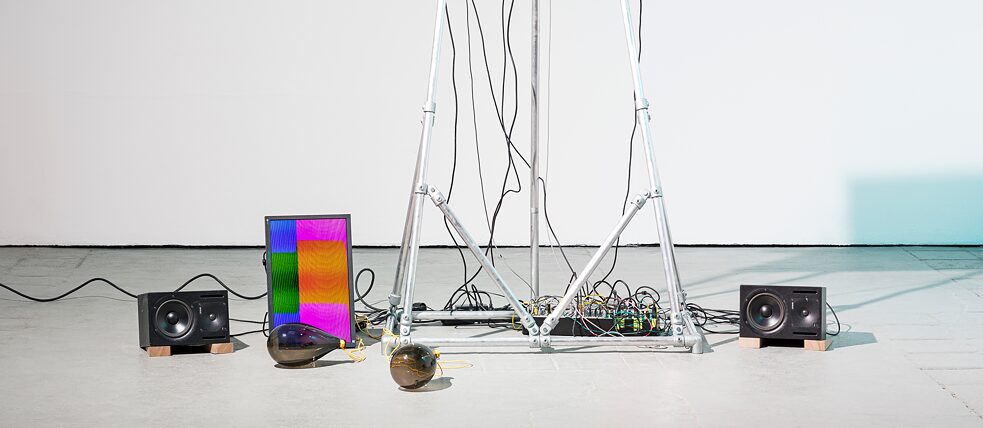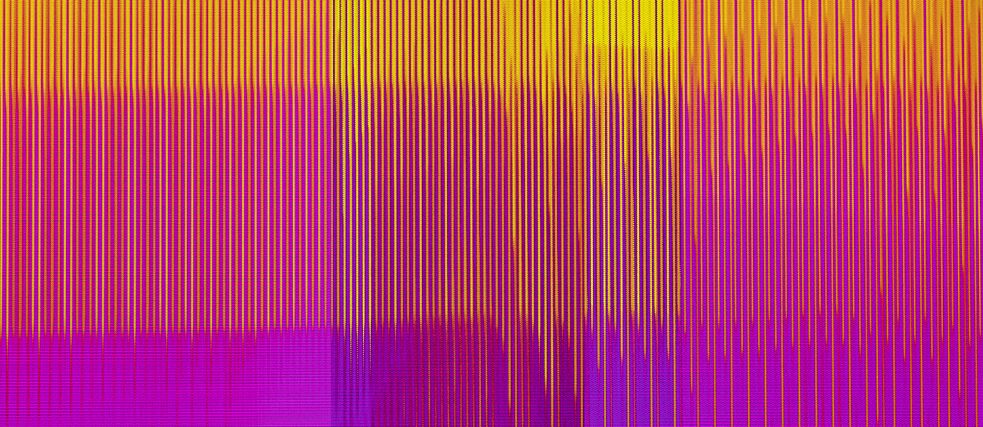Robert Lippok
exhibition “Techno Worlds”
Objects and Bodies
Objects and Bodies (2020) is a minimal gesture of maximum projection. A pulse is created from a low frequency oscilator, an electro dynamical exciter adds vibration to the surface of a cymbal, Hand-blown glass resonators transform the sound.The signal is sent through a modular system and executed by clock drivers while the visual elements are created by a group of video synthesizers, transferred to monitors. Bright synthetic colours cover the screens. For Robert Lippok, this is the way the soul of techno is reproduced, from these essential means and deliberately evading the use of a computer.
Spatially, the piece evokes its environmental structure, while the continuous rhythm generated from minimal loops gives rise to an undoubtedly corporeal experience, eroding the space around us. For the artist, Objects and Bodies is a joyful and straightforward statement about his sincere and profound experiences with techno. The piece makes us feel the complexity of techno, the spatial sense of sound that not only highlights the experimental, the anonymous, the underground, or the artistic side of techno, but also its transcendence.
Repetition and simplicity are the essence of techno, as well as, Object and Bodies’s soul. In his book Schleifen. Zur Geschichte und Ästhetik des Loops (2015) Tilman Baumgärtel explains that, by making the moment repeatable, loops oppose the passage of time with a non-linear alternative. While on the one hand pleasure becomes tediousness, at the same time transcendence emerges from boredom. Repetitive sounds, smoke and movement have been the recipe for transcendence from time immemorial. Clubs can be, why not, spiritual places. Clubbing has multifarious layers. They are places in which to relate, in which one could feel other bodies around and communicate. A dance floor is place where many things can happen. One comes closer to oneself, cutting off from everything that disturbs us in society. Dance floor could be a place to generate seed of change, a place for revolution. As it happened already in the 90s in the underground Berlin club scene.
Object and Bodies reminds us the total variance of time, the understanding of experimenting with loops —both visually and sonically— as an artistic process and as a stepping-stone towards the implementation of the current culture of repetition. With its techno-induced blissful, simple, ecstatic and repetitive rhythm, it becomes the clock that brings us to the past, to the beginnings. An opportunity to really find time and space to reflect on the developments and forces that shaped techno culture from the 1990s up to today. And it has the potential to make us feel empowered for transformation.
Object and Bodies is a simple gesture of maximum transcendence.

